Parks in Science History is a series of articles and videos made in cooperation with graduate students from various universities. They highlight the roles that national parks have played in the history of science and, therefore, the world's intellectual heritage.
-
Acadia National Park
Article 1: Changing the face of science in Acadia National Park: warblers, coexistence, and hypothesis-driven ecology
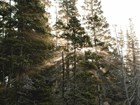
Robert H. MacArthur, who conducted research in Acadia National Park, would help change the way that ecologists conduct research. Read more
-
Boston Harbor Islands National Recreation Area
Article 2: Rocky Intertidal Research in the Boston Harbor Islands National Recreation Area
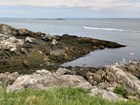
Along coastlines, where the land meets the sea, is an area known as the intertidal zone -- the region between the lowest low tide and the highest high tide. How do relationships between organisms affect where different species are found, and how important are local environmental conditions in controlling the distributions of species? Drs. Jane Lubchenco and Bruce Menge, two marine ecologists, set out to answer these questions. Read more
-
Everglades National Park
Article 3: Odum's 1960s Everglades Studies Shape The Science of Ecology
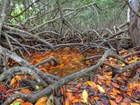
Dead plant matter (the stuff you might feel inclined to rake up and get rid of) is an incredible energy source and the engine behind the region’s productivity. Read more
-
Grand Canyon National Park
Article 4: Restoring a dammed river with experimental flooding
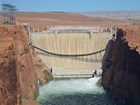
One of the hot topics in environmental science is whether or not to remove dams to restore the natural flow of rivers. Over the centuries, thousands of dams have been constructed on rivers across the United States to store water or produce electricity. Some of these dams influence our national parks. Read more
-
Great Smoky Mountains National Park
Article 5: Testing Hypotheses for Plant Species Distributions in the Mountains
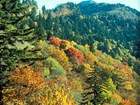
Great Smoky Mountains National Park is a site with scientific value. One such scientific landmark is the work of Robert Whittaker, whose PhD dissertation research in the 1940s illuminated the complexity of ecological succession. His work has had a lasting effect on the field of ecology ever since. Read more
-
Rocky Mountain National Park
Article 6: A tale of two sides of the mountain in Rocky Mountain National Park
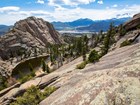
In 1997 a group of scientists led by Dr. Jill Baron, an ecologist at the US Geological Survey (USGS), designed a study in Rocky Mountain National Park, in Colorado. Baron and her colleagues wanted to understand how mountain ecosystems respond to air pollution. Read more
-
Yellowstone National Park
Article 7: Forest Fires in Yellowstone: the Science of Burning and Regrowth
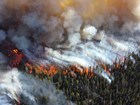
It was the fall of 1988. Dr. Monica Turner, a 29-year-old staff scientist at Oak Ridge National Laboratory, flew out to Yellowstone National Park to start an experiment in forest ecology. She got her first glimpse of the Park since it had been ravaged by huge fires, the likes of which no one had ever seen. Read more
-
Yellowstone National Park
Article 8: Discovering Life in Yellowstone Where Nobody Thought it Could Exist
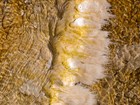
Small scale views in Yellowstone are compelling, especially the colors in hot pots and deep pools. But far from being merely aesthetically pleasing, these colors are significant because they sparked an important scientific inquiry with long-lasting implications for science, technology, and society. Read more
-
Everglades National Park
Article 9: National Parks in the History of Science: Island Biogeography (Video)

Fifty years ago, mangrove islands in Everglades National Park were the subject of a now-famous experiment that tested an important idea about biodiversity. Meet the scientist who conducted it. Read more
-
Indiana Dunes National Park
Article 10: National Parks in the History of Science: Plant Succession (Video)

In the 1890s the dunes now protected as Indiana Dunes National Park hosted the first research on plant succession. That research helped establish ecology as a science, made succession an enduring concept, and explains why you mow your lawn. Read more
-
Tule Springs Fossil Beds National Monument
Article 11: National Parks in the History of Science: Radiocarbon Dating (Video)

Radiocarbon dating-sometimes called carbon-14 dating–is the most important method for determining the ages of ancient organic materials as old as about 60,000 years. The first time radiocarbon dating was used to answer a scientific question about human history was the early 1960s at what is now Tule Springs Fossil Beds National Monument in Nevada. Read more
-
Article 12: National Parks in the History of Science: Dendrochronology (Video)

Scientists around the world use tree rings to understand past climates, ecosystems, and cultures. The study of tree rings to understand the past is called dendrochronology. This field of science began in several national parks in the Southwest: Mesa Verde, Aztec Ruins, Chaco Culture, and others. Read more
-
Grand Canyon National Park
Article 13: National Parks in the History of Science: Visibility (Video)

Is there a way to measure visibility in a scientific way, with accuracy and precision? Some atmospheric physicists started figuring that out in the 1970s in the Grand Canyon. They succeeded, and today their methods allow governments worldwide to monitor visibility and enact policies to improve it by reducing air pollution. Read more
-
Dry Tortugas National Park
Article 14: National Parks in the History of Science: America's First Tropical Marine Laboratory (Video)

Field research often requires field laboratories. Not surprisingly, those labs are in some of the most interesting ecosystems on the planet. With clear water, diverse habitats, and abundant life, the Dry Tortugas – 70 miles beyond Key West, Florida – hosted America’s first tropical marine laboratory from 1904-1939. The legacy of science continues today as Dry Tortugas National Park and its partners work to understand and protect this special place. Read more
